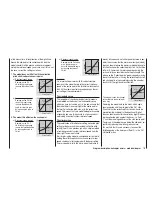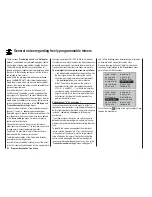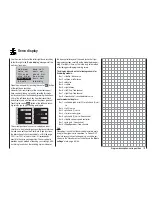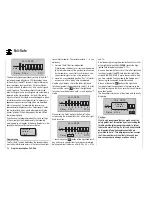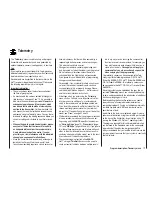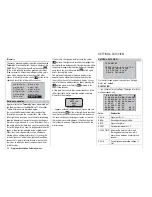
105
Program description: helicopter mixers / auto-rotation settings
For practice, then, you should set the value in this line
so that the motor runs at a reliable idle during auto-
rotation, but without the clutch engaging, so that you
can open the throttle immediately to recover from an
emergency; for an electric helicopter the motor should
be reliably “off”.
Tail rotor
(static torque compensation)
For normal fl ying the tail rotor is set up in such a way
that it compensates for motor torque when the helicop-
ter is hovering. This means that it already generates
a certain amount of thrust even in its neutral position.
The level of thrust is then varied by the tail rotor control
system, and also by the various mixers which provide all
manner of torque compensation, while the tail rotor trim
is also used to compensate for varying weather condi-
tions, fl uctuations in system rotational speed and other
infl uences.
However, in an auto-rotation descent the main rotor
spins according to the windmill principle, i. e. it is not
driven by the motor, and therefore there is no torque
effect for which compensation is required, i. e. which
the tail rotor would have to correct. For this reason all
the appropriate mixers are automatically switched off in
auto-rotation mode.
However, the basic tail rotor setting therefore has to be
different for auto-rotation, as the compensatory thrust
described above is no longer required:
Stop the motor and place the helicopter horizontal on
the ground. With the transmitter and receiving system
switched on, select the “
Auto-rotation
” fl ight phase.
Fold both tail rotor blades down and change the blade
pitch angle to zero degrees in the “Tail rotor” line. Viewed
from the rear, the tail rotor blades should now lie parallel
to each other.
Depending on the friction and running resistance of the
gearbox, you may fi nd that the fuselage still yaws slightly
in an auto-rotation descent. If necessary, the relatively
slight torque which causes this effect must then be
corrected by adjusting the tail rotor blade pitch angle.
This value will always be a small fi gure between zero
degrees and a pitch angle opposed to the direction of
tail rotor pitch required for normal fl ight.
Summary of Contents for mx-16 HOTT
Page 7: ...7 For your notes...
Page 37: ...37 For your notes...
Page 41: ...41 For your notes...
Page 45: ...45 For your notes...
Page 51: ...51 For your notes...
Page 55: ...55 For your notes...
Page 81: ...81 For your notes...
Page 103: ...103 For your notes...
Page 133: ...133 For your notes...
Page 141: ...141 For your notes...
Page 161: ...161 For your notes...
Page 173: ...173 For your notes...











